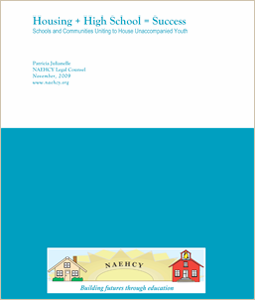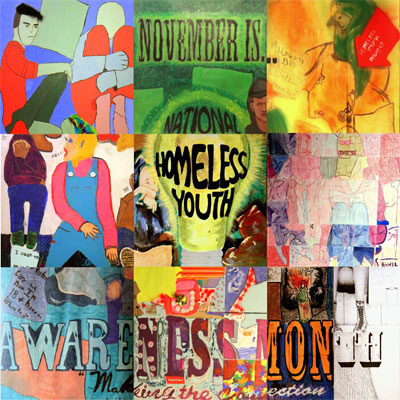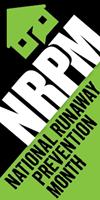The Beat
 Do you want to help youth find a career that matches their goals and interests instead of landing just any job? If you answered yes, you’re in luck. The U.S. Department of Labor’s Division of Youth Services recently added to its Youth Connects website a section called Credentials for Youth. The new Web pages help youth identify the skills they need to work in a number of growing industries.
Do you want to help youth find a career that matches their goals and interests instead of landing just any job? If you answered yes, you’re in luck. The U.S. Department of Labor’s Division of Youth Services recently added to its Youth Connects website a section called Credentials for Youth. The new Web pages help youth identify the skills they need to work in a number of growing industries.
We like this tool because of its step-by-step approach to identifying careers that may be a good match, and because it tells youth how to get the experience to make those careers a reality. Although the resource was created primarily for workforce investment staff, it is helpful for anyone pointing youth toward a brighter future.
Credentials for Youth also links to other useful websites, such as CareerOneStop and My Next Move.
On November 15, the Department of Labor will host a live chat to talk about Credentials for Youth and the growing number of programs that help young people earn credentials or move into employment. The chat is open to members registered with Workforce3One, a collection of the Department of Labor’s online workforce development communities. Participants will need to log in to the Youth Community of Practice forum on November 15 and click on the “Chat” link near the top of the page. You can email questions about the chat to the Division of Youth Services.
More From NCFY
From the Street to the Office: Helping Homeless Youth Recognize Their Workplace Potential
NCFY Recommends: Connect Youth with Jobs
Youth Speak Out: A Journey From Homelessness to a Career in Youth Work
Audio Article: Helping Youth Become Self-Sufficient
 Our most popular post of the past year was our article about raising money on the deals website Groupon. With that in mind, we thought we would look into two other popular ways of creating online fundraising campaigns, the "crowdfunding" websites Indiegogo and Kickstarter.
Our most popular post of the past year was our article about raising money on the deals website Groupon. With that in mind, we thought we would look into two other popular ways of creating online fundraising campaigns, the "crowdfunding" websites Indiegogo and Kickstarter.
Because the two sites are somewhat trendy, using them can create a buzz that you might not get from a regular online fundraising campaign. For example, Jenn Cohen, founder of the Circus Project, which trains Portland, OR, homeless youth in the circus arts, last year raised about $2,500 on Kickstarter for a youth performance.
“The value of the campaign went above the money we raised,” she says. “It was an excellent networking opportunity.”
Kickstarter and Indiegogo can be good choices if, like Cohen, you have a specific project or effort you want to raise cash for, as well as a clear message about why that project or effort matters. Cohen was able to hook people’s interest with photos of homeless youth doing complicated circus acts, and with stories of how the program helps young people gain skills and independence.
Here are Cohen's tips on using crowdfunding sites:
Set realistic goals. Though signing up for the sites is free, fundraising campaigns are “all or nothing”--meaning you don’t keep a cent if you don’t reach your goal (unless, in the case of Indiegogo, you opt to pay a higher commission). Cohen says you should set a dollar amount you’re fairly certain you can reach. And since both sites take percentages of whatever money you keep, we suggest you factor that into your budget as well.
Cohen also recommends setting a campaign length, say 30 days, that is long enough to enable you to reach your goal, but not so long that people will lose interest and you will spend too much staff time on the effort.
Spread the word early and often. Having a strong social media presence and a solid email list can help you publicize your campaign, Cohen says. But getting others to share is just as important.
“I asked anyone I knew with a circus or runaway and homeless youth affiliation to post on their Facebook page,” she says.
Also, be sure to thank donors and keep them up-to-date on your progress, even at risk of being annoying, she says, because some people will make two or three gifts over the course of the campaign.
Avoid perk pitfalls. Both sites have you promise incentives you’ll give to people who make a donation (the way public radio stations give out tote bags). Cohen advises you choose your perks carefully. “I made it especially so it wouldn't be time intensive to send rewards," she says.
The cost of items can also add up. Examples of inexpensive, easy-to-deliver perks include artwork created by youth, thank you notes signed by them, thank you tweets, stickers with your logo on them, or tickets to an event your organization is putting on.
Indiegogo vs. Kickstarter
| Indiegogo | Kickstarter | |
|---|---|---|
| You can raise money for | Anything. | Creative projects that fall into the following categories: art, comics, dance, design, fashion, film, food, games, music, photography, publishing, technology and theater. |
| You can’t raise money for | Fraudulent purposes. Everything else is permitted. | Personal needs, broad causes or charities not linked to a specific campaign, and some additional prohibited items and subjects. |
| You can start a project if | You’re older than 13. The site claims “Anyone, anywhere can raise money for anything on Indiegogo.” Those under 18 must be emancipated or have a parent or guardian’s consent. |
You are 18 or older and —are a permanent U.S. resident with a Social Security or Employment Identification Number —have a U.S. address, bank account, and state-issued ID —have a major credit or debit card |
| Your project gets funded if | You reach your goal. Or, under a “flexible” payment option, you can pay Indiegogo a bigger commission and still keep the money if you don’t reach your goal. | You reach your goal. Funding is “all or nothing.” |
| It costs | Between 4 and 9%, depending on whether you choose the standard or flexible plan and you meet your goal. There’s also a 3% charge for credit card processing. | 5% of successful campaigns, plus a 3-5% payments processing fee. |
 For people in the runaway and homeless youth field, it's the million dollar question: What makes a young person more or less likely to run away or leave home and become homeless? If we knew the answer, perhaps we could end youth homelessness entirely.
For people in the runaway and homeless youth field, it's the million dollar question: What makes a young person more or less likely to run away or leave home and become homeless? If we knew the answer, perhaps we could end youth homelessness entirely.
Of course, the reasons may be as varied as the young people who run away. But several recent papers have shed light on some of the factors that may make youth more likely to leave home. The three studies highlighted here used data from the National Longitudinal Study of Adolescent Health, or Add Health, the largest and most comprehensive nationally representative survey of adolescents. Here is what they say about what may put youth at risk for running away:
1. Unstable home life. Adolescents from families with a lot of aggressive and antisocial behavior may run away as a means of escaping this environment, a study from the University of Nebraska-Lincoln finds.
2. Having run away before. The same study noted that even runaways who leave the streets may choose to return after a period of time, putting them once again at risk.
3. Substance use. The researchers from the University of Nebraska-Lincoln also found that homeless young people were more likely to use illicit substances such as alcohol and marijuana, and that this behavior usually started before they left home.
4. Peer influence. Researchers from Tulane and Wichita State University found that young people who ran away associated more often with peers who drank, smoked, used drugs and skipped school. These friendships were no less close than the friendships of teens with healthier behavior. The researchers speculate that more “antisocial” peers may encourage running away as a solution to problems at home.
5. Same-sex relationships. Researchers from North Carolina speculate that social stigma that can surround teens' same-sex attraction and relationships may distress teens emotionally, make them feel depressed, and cause tension and conflict with their parents. Indeed, other research shows that a large proportion of youth on the street identify as lesbian, gay, bisexual, transgender or questioning.
Read the Articles
“Risk Factors for Running Away Among a General Population Sample of Males and Females.” Youth & Society, Vol. 42, No. 2 (2011).
“Precursors of Running Away During Adolescence: Do Peers Matter?” (abstract). Journal of Research on Adolescence, Vol. 22, No. 3 (September 2011).
“The Association Between Same-sex Romantic Attractions and Relationships and Running Away Among a Nationally Representative Sample of Adolescents” (abstract). Child and Adolescent Social Work Journal, Vol. 28, No. 6 (2011).
 When it comes to helping homeless youth finish high school, research has shown that stable housing plays an important role. But helping students who are on their own find and maintain safe, appropriate housing is easier said than done.
When it comes to helping homeless youth finish high school, research has shown that stable housing plays an important role. But helping students who are on their own find and maintain safe, appropriate housing is easier said than done.
In a number of school districts across the country, educators, youth workers, policy makers and continuums of care for people experiencing homelessness are working together to make housing a reality for unaccompanied young people. The October 2012 update to “Housing + High School = Success,” a report first released by the National Association for the Education of Homeless Children and Youth in 2009, showcases the successes and illuminates the struggles of several of these partnerships.
Of course, we like to see public and private organizations joining forces to help homeless young people. And organizations that receive funding from the Family and Youth Services Bureau’s Runaway and Homeless Youth Programs are required to work closely with their local McKinney-Vento liaisons, who are federally mandated to protect homeless youths’ educational rights.
So we were interested to see some of the ways the seven partnerships included in the NAEHCY report collaborated to build relationships among local school boards, administrators, teachers and the district’s McKinney-Vento liaison in search of more stable housing options and better learning experiences for young people. For example:
- Youth workers at a Virginia-based program invite students and teachers to the youth’s intake meeting to help them figure out what services may be the best fit.
- Several programs ask trusted teachers and school personnel to help youth become more comfortable living in a host home (similar to a foster home) and to keep an eye out for any problems adjusting.
- One school district leased a home it owned near a high school to a housing program at no charge.
- After one Washington organization closed its doors, the nearby school district began a search for funding that is expected to lead to the reopening of two youth homes.
If you’re interested in building or strengthening your own community partnerships in the interest of housing homeless students, you can find sample documents used to design and implement these programs on the NAEHCY website.
More From NCFY
"NCFY Recommends: How Schools Work and How to Work with Schools"
"Primary Sources: Engaging Students, From Grade School to Graduation"
"Q&A: Dave Frederick of The Coffee Oasis on Building Community Relationships"
"Creative Community Collaborations: Making Your Community Work For You"
 Last June, when the United States Interagency Council on Homelessness unveiled its framework for ending youth homelessness, representatives from several youth-serving organizations presented feedback. They and the federal representatives at the meeting were unanimous on one point: Before we can end youth homelessness, we need to know how many homeless youth there are, and we need a better understanding of how best to help them, or better yet, how to prevent them from becoming homeless in the first place.
Last June, when the United States Interagency Council on Homelessness unveiled its framework for ending youth homelessness, representatives from several youth-serving organizations presented feedback. They and the federal representatives at the meeting were unanimous on one point: Before we can end youth homelessness, we need to know how many homeless youth there are, and we need a better understanding of how best to help them, or better yet, how to prevent them from becoming homeless in the first place.
USICH took that plea seriously. In fact, the council was already at work on the first ever national research agenda for advancing our understanding of homelessness in general. The agenda highlights areas, including youth homelessness, where more knowledge is needed to inform policy and enhance practices in the field, and encourages federal, local and private investments in research.
To draft the agenda, USICH reviewed more than 200 studies conducted over the past two decades, as well as research currently under way. The review identified gaps in our knowledge of what causes homelessness for particular groups of people, including youth, and of how we can best address and prevent it.
The youth research agenda includes
- studies of homeless youth prevalence, needs and characteristics;
- research on students experiencing homelessness; and
- analyses of the relationship between the foster care and juvenile justice systems and homelessness.
USICH is encouraging funders and researchers to take the agenda into account as they invest in and design new studies. The council also says cities and counties can partner with universities to study the questions most pertinent to their communities.
What Do You Think?
We’d love to hear what you think about the agenda. What’s at the top of your own “research agenda”? And is your organization collaborating with researchers on studies of homeless young people?
Let us know by emailing us or sending us a message on Facebook or Twitter.
More From NCFY
"Bright Idea: Communication, Flexibility, Patience Key to Agency-Researcher Partnerships"
"A New Federal Approach to Working With Homeless Youth"
"Q&A: Barbara Poppe, United States Interagency Council on Homelessness"
 Recently, we spoke to psychologist Melanie Barwick about her research on how to prepare youth workers to use the evidence-based practice motivational interviewing in their work. In a new podcast, we continue the conversation with Barwick and one of the trainers she enlisted in her study. They talk in more depth about their finding that providing intensive, comprehensive training and support to staff members and supervisors makes it easier for them to put motivational interviewing into practice.
Recently, we spoke to psychologist Melanie Barwick about her research on how to prepare youth workers to use the evidence-based practice motivational interviewing in their work. In a new podcast, we continue the conversation with Barwick and one of the trainers she enlisted in her study. They talk in more depth about their finding that providing intensive, comprehensive training and support to staff members and supervisors makes it easier for them to put motivational interviewing into practice.
 Want to engage youth in a creative activity that helps them take ownership of their space? Enter your young people in the Family and Youth Services Bureau's Runaway and Homeless Youth Mural Contest. You could win the materials for youth to paint a mural in your program.
Want to engage youth in a creative activity that helps them take ownership of their space? Enter your young people in the Family and Youth Services Bureau's Runaway and Homeless Youth Mural Contest. You could win the materials for youth to paint a mural in your program.
That’s just what happened to the Colorado Rural Collaborative Youth Leadership Team, which provided the 2012 winning entry. Their mural design combined tiles from nine different youth-serving agencies into one powerful composition reminding viewers that “November is National Homeless Youth Awareness Month.”
This November, youth representatives from the winning team will talk about their mural and how it represents their programs at the 2012 National Runaway and Homeless Youth Grantee Conference in Indianapolis, IN.
To Apply
Applicants must be grantees of FYSB’s Runaway and Homeless Youth Program. Please submit the following:
- a rough sketch of the mural design
- a one- to two-page write-up detailing the meaning of your mural and the youth-driven creative process
- a release form allowing NCFY to publish your entry on our site
A panel of FYSB staff and youth will judge the drawings based on the meaningfulness and creativity of the design and the extent to which Positive Youth Development was used in the process. The winning agency will be given a gift card to cover the purchase of art supplies. Canvas can be used if the winning facility prefers for paint not to be applied on their walls directly.
Looking for guidance as you prepare your 2013 application? Entries from last year’s second and third place winners are also featured on the NCFY website.
Materials are due to ncfy@acf.hhs.gov by 5 p.m. Eastern on Friday, January 25, 2013. Please live chat or call us at (301) 608-8098 if you have questions.
 If you've ever bought a box of Girl Scout cookies or paid a high school softball team to wash your car, you know that young people bring an almost irresistible something to fundraising. At the same time, young fundraisers pick up important skills, like setting goals, planning ahead, working as a team and making the case for a cause.
If you've ever bought a box of Girl Scout cookies or paid a high school softball team to wash your car, you know that young people bring an almost irresistible something to fundraising. At the same time, young fundraisers pick up important skills, like setting goals, planning ahead, working as a team and making the case for a cause.
Members of 360 Youth Services’ youth advisory board, in Naperville, IL, wanted to learn those skills raising money for activities and supplies for youth in the program, says Damir Djidic, transitional living program coordinator and advisor to the group.
“Adults tend to respond better to kids than other adults,” Djidic says. “They see other adults as just collecting money, while they see youth as doing more than collecting money. They respond well to commitment and entrepreneurial skills in young people.”
This year the advisory board decided to hold a car wash and a youth art sale, raising more than $1,000 with assistance from adult mentors. The advisory board uses the cash they raise to put on fun game nights, support community organizations that feed the hungry and help veterans, and purchase school supplies and clothing for program participants, Djidic says. Here are some lessons Djidic and the youth advisory board have learned about fundraising:
1. Marketing makes a difference. Youth can’t raise money at a fundraising event if people don’t come, Djidic says. “The only way the fundraiser can be successful is if you put a lot of effort into advertising.”
The 360 advisory board uses social media, old-fashioned paper fliers and word-of-mouth to get the message out. Some great, free places to advertise include coffee shops, grocery stores and community bulletin boards.
2. 'Tis the season. Is there an ideal time to hold a fundraiser? Absolutely, Djidic says. 360 Youth Services has found the best times to be the holidays (the end of November to the beginning of January) and late summer (end of August to early September).
Those are times when people have more free time and are in the spirit of giving and helping others. For winter fundraising events, youth should consider an indoor activity and always try to be the first to ask for funding, Djidic says. For example, if youth are planning a winter fundraiser, they should get a jump on soliciting donations in mid-November.
3. Flexibility is key. Not every young person who volunteers to help with the fundraiser may be as enthusiastic as others all the time. Maybe someone’s personal issues are taking the forefront. Someone else might be busy with school work, or just not interested in the particular activity.
Youth workers or other adult mentors can mediate a conversation among youth about working together, while also helping to find specific roles that fit the busy young person's strengths, like designing fliers, counting up the money in the cash box or handling social media marketing.
More From NCFY
“More Than Flowers Blossom When Youth Become Fundraisers”
“Ten Rules of Events Fundraising”
“Right on the Money: Garnering Community Support for Your Special Events”
 November is American Indian and Alaska Native Heritage Month, a time for celebrating the ancestry and traditions of Native cultures. Here are some resources that help young adults embrace their heritage and connect with peers throughout the year:
November is American Indian and Alaska Native Heritage Month, a time for celebrating the ancestry and traditions of Native cultures. Here are some resources that help young adults embrace their heritage and connect with peers throughout the year:
- United National Indian Tribal Youth, known as UNITY, encourages young adults to engage in their communities by forming youth councils. Each council develops its own programs promoting community service, cultural heritage and healthy lifestyles but must submit a constitution and application to be recognized as part of the UNITY network.
- Health resource website We R Native, which is designed for and by Native American youth, features an “Ask Auntie” column that allows youth to submit their questions anonymously.
- Young adults looking to explore their creative sides can reach out to NVision to collaborate on cultural and multimedia programs highlighting the Native American experience. NVision views these artistic collaborations as a way to develop youth leadership skills and strengthen Native American identities while raising public awareness about concerns affecting native communities.
More From NCFY
"ASK NCFY: How Can My Organization Reach Out to Native American Youth?"
"NCFY Recommends: Cultivating the Next Generation of Native American Health Professionals"
 Each November, National Runaway Prevention Month gives youth workers a platform to educate the public about the issues affecting runaway youth. Here are some links from organizer the National Runaway Switchboard that we think might be particularly useful for youth workers in November and beyond:
Each November, National Runaway Prevention Month gives youth workers a platform to educate the public about the issues affecting runaway youth. Here are some links from organizer the National Runaway Switchboard that we think might be particularly useful for youth workers in November and beyond:
- Use the 2012 Reporter’s Source Book on Runaway and Homeless Youth to provide important background information to the media, or to create your own prevention month press release. The source book includes definitions, trends and tips for prevention.
- Novembers 1 is a Social Media Day of Action, and NRS encourages partners to launch similar campaigns throughout the month using a list of helpful Facebook and Twitter tips. You’ll find us chiming in on NCFY’s Facebook page and Twitter feed.
- Download or order promotional materials to distribute to clients or hand out in your community: a brochure for youth, in English (PDF, 1.9MB) and Spanish (PDF, 1.9MB), and a guide for lesbian, gay, bisexual, transgender and questioning youth, in English (PDF 4.7MB) and Spanish (PDF, 2.9MB).
- NRS’s Let’s Talk Runaway Prevention Curriculum was recently found to improve young people’s ability to deal with challenging life situations and overcome obstacles in a healthy way. A number of youth-serving organizations use the curriculum in their efforts to keep youth from running away.
- Once November is over, agencies can enter the NRPM Community Contest to share how their events increased public awareness. Those thinking ahead to next year can also get inspiration from reading about past winners. And check out our Q&A with NRS staffer Lashawnda Carter for pointers on what makes for a winning National Runaway Prevention Month campaign.


 Subscribe to RSS Feed
Subscribe to RSS Feed

 Sign up
Sign up Follow us
Follow us Like us
Like us Sign up for our RSS feeds:
Sign up for our RSS feeds: 

